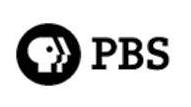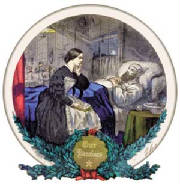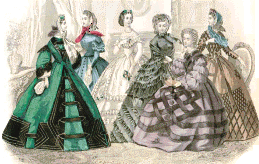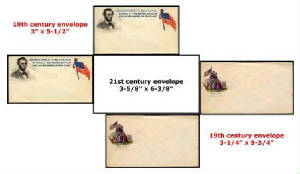The easiest place to find information is also the easiest place to
post it - here on the web. Anyone can create a web site just like this one. Many have an agenda to put forward or an
ax to grind. Consequently, you must determine who created and maintains the site and where the information on the site
comes from. If what you read or see on a web site is inconsistent with what you find on other sites or in the library, you
should be suspicious.
| The Internet Research Dilema |

|
| Click here for a technical explanation of Domain Names. |
There are some easy ways to eliminate much of the garbage and
save yourself some time. The first place to look is the suffix at the end of the web site's address. For example, the suffix
for this site is org - www.mackinawrivervalley.org . That means this site is used by an organization. The site primarily offers information for members,
potential members, or others searching for information.
| Public Broadcasting System |

|
| A Reliable ".org" Web Site |
Org sites may or may
not be safe. For example, the PBS (Public Broadcasting Service) site - http://www.pbs.org - is an org site. By reputation we believe that what
PBS publishes is true and accurate. We trust PBS. On the other hand, - http://www.nazi.org - is a neo-Nazi web site. Most people in our society would find anything they read on a Nazi site suspect,
but this address also ends in org .
When you find information on a site that you want to use, but you are not
sure if the site and the information are trustworthy, there are ways to evaluate the site. Apply the following criteria:
- Accuracy - Is the information accurate when checked against other sources?
- Authority - Is it clear who is sponsoring the web site?
- Content - What is the purpose of the web site? (To inform, convince, or sell?)
- Coverage - Does the site cover the subject adequately?
- Currency - Is the publication date clearly stated?
- Documentation - Does the author explain where the information was obtained?
You also want to consider if the information is of a scholarly nature, or if
it is propaganda. Criteria for these issues and additional questions pertaining to the points above can be found at the Purdue
University Online Writing Laboratory. Click Here to access that information.
One of the criteria above is "Documentation." These are the primary
or secondary sources used in the creation of the site. Does the site list its sources? If it does list sources, is
a link provided so you can easily check the source? If sources are not listed, or if links are not provided, why not? If
a site tells you something and backs it up by citing the source, you can be pretty sure they're telling you the truth (except
in the case of a group like the Nazis whose sources are also suspect). If the site includes links to primary
sources, then you can go to the primary sources and check for yourself. Read through the sources and determine if they sound
legitimate.
| Purdue University Online Writing Lab |

|
| Click here for more information about sources. |
Enough about org sites. There
is another suffix that you can almost always trust, and that is the edu suffix.
This means the site is owned, created, and maintained by a university organization. If we can't trust our universities, who
can we trust? There are professors, however, who have agendas, so be aware that it is possible an edu site
can be misleading. There are also universities that have strong attitudes about certain topics. Sites like Brigham Young University
(Mormon), Bob Jones University (conservative Christian), Notre Dame University (Roman Catholic), and American Jewish University will
have different views of the same topics - but all four of those web sites use the edu suffix.

|
| Click here for the LOC web site. |
The third site you will use is the gov
site. For example, the Library of Congress web site is phenomenal. You could spend the rest of
your life looking at the primary source information available at this web site. Federal, state, county, and municipal governments
all use the gov suffix, and for the most part, they will be reliable. As we all know,
however, the government does make mistakes! So, as with edu sites, be aware that
it is possible to find bad information on a gov site.
| Female Nurses of the Civil War |

|
| Click on the drawing to go to the Female Nurses web site. |
What about "dot com" sites? Generally, it is best not to
conduct research on the web outside of the gov, org,
and edu suffixes. .Com sites are businesses
who own their sites to make money. Their information may or may not be accurate, it all depends on the site.
For example, Female Nurses of the Civil War uses the .com suffix
because it is hosted at a commercial site. Despite the .com ending on their address, the site includes valuable
information that you might expect to find on a .org site. This site might be a .com site, but it is a well-researched and reliable site.
| Originals by Kay |

|
| Click on the drawing to go to Kay's web site. |
Other exceptions are the commercial sutlers that sell clothing
and equipment to reenactors. Some of these sites use photographs or drawings as evidence that their merchandise
is backed up by research and is authentic in its reproduction. Such a site is http://www.originals-by-kay.com - Originals by Kay - which includes
much graphic documentation upon which her work is based.
| Click on image for larger view. |

|
| Civil War envelopes were not only smaller than today's, but they did not have glue on the flap. |
Some commercial sutlers try to take advantage of their customer's
ignorance. For example, at the Library of Congress American Memory site, I learned what Civil War stationery and
envelopes looked like and in what sizes they were manufactured. I used this information to create my own reproductions which
I now use in my Regimental Sutler impression. Later, out of curiosity, I ordered a packet of stationery and envelopes from
a commercial sutler. What I received were 21st century pieces of paper and envelopes with 19th century images photo-copied
onto them. Although the images were correct, the sizes were completely wrong. Since whoever had created these items knew enough
to use Civil War images, they also should have known that Civil War paper and envelopes were sold in smaller sizes. This is the type of inaccurate portrayal you want to AVOID!
The Internet is a good and useful tool. You should take advantage
of the research opportunities it offers. However, it is your responsibility to make sure your portrayal of the Civil War is
accurate. If it is not, other reenactors will recognize it. Worse, though, is that the general public and school students
will not know. They will believe that your innacurate portrayal is true, and that is something we all want to avoid.
Valuable Internet Research Resources
If you have not yet read through the tips on Museum, Library, and
Archive research, click on the link below to move to that page.
|

